Clean room
What are cleanrooms?
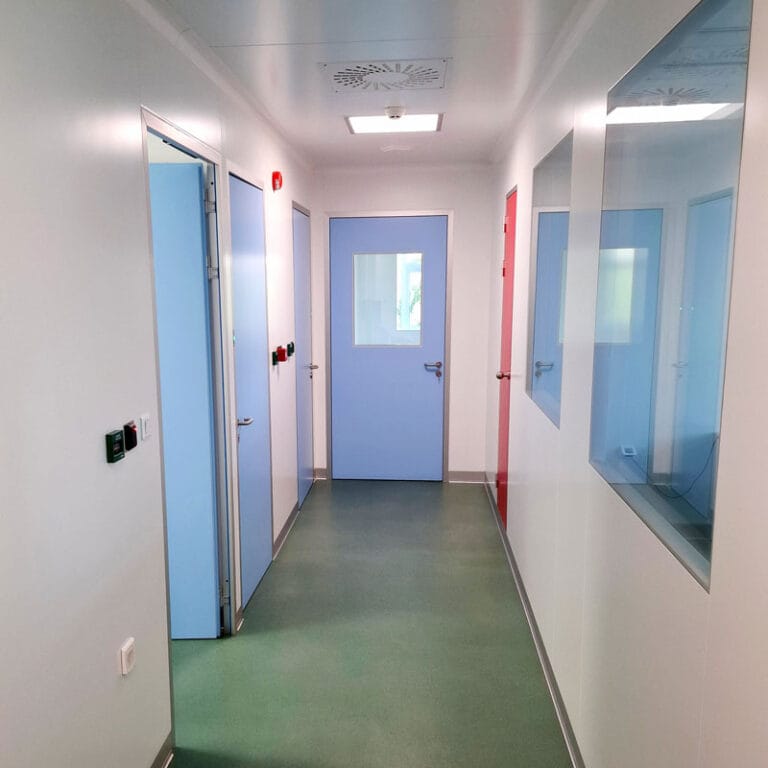
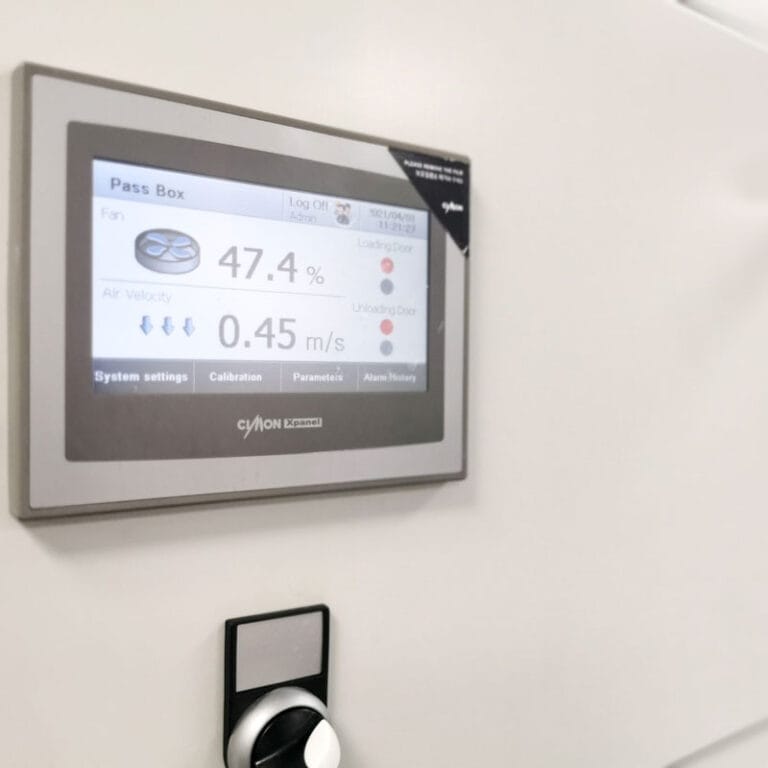
Our approach to cleanroom design and implementation
Our approach to cleanroom design and construction meets the specific requirements of each industry, whether it is a high-profit industry or the one with somewhat lower demands. We begin with an analysis of the existing infrastructure and the client’s needs, then we make the project technical documentation in accordance with current regulations, and build cleanrooms which meet the specific requirements. We pay close attention to the air quality and controlled flow of personnel and materials. Our team offers turnkey solutions, including equipment installation, system integration and validation — all in compliance with the highest industry standards.
Application of clean rooms for industrial production
CLEAN ROOMS - our works
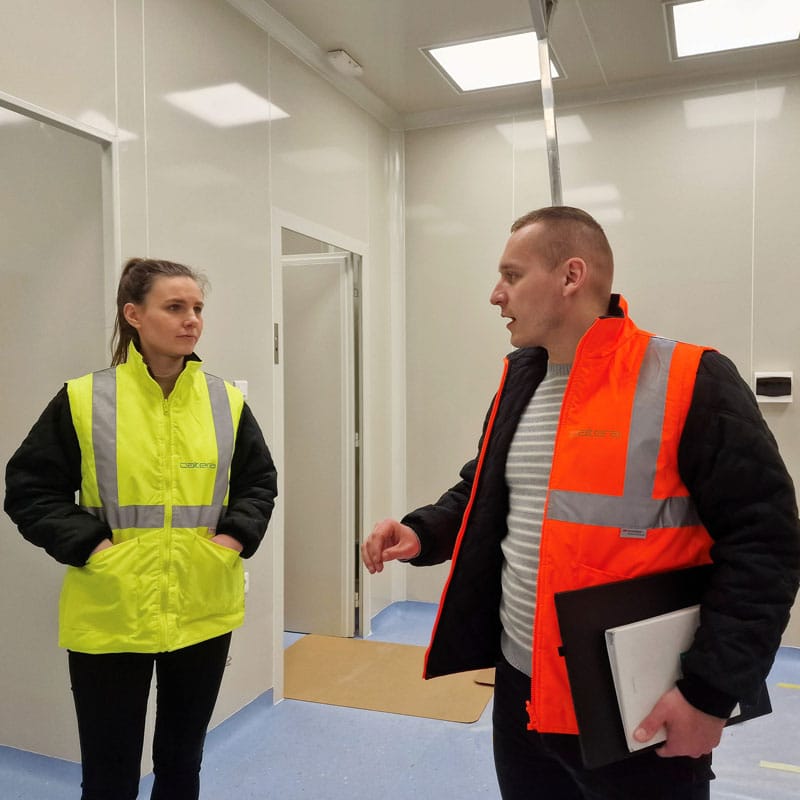
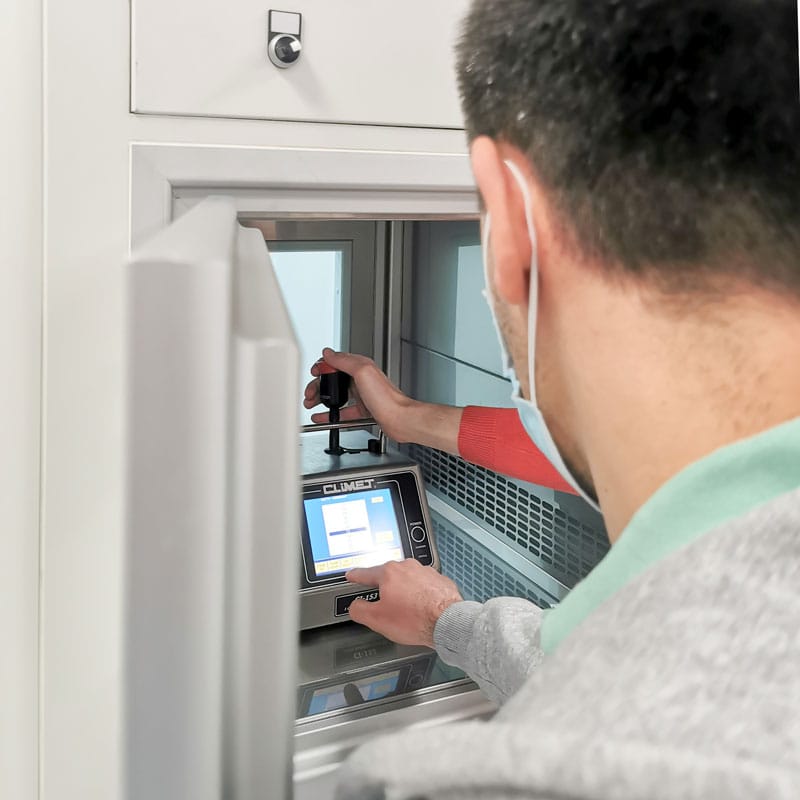
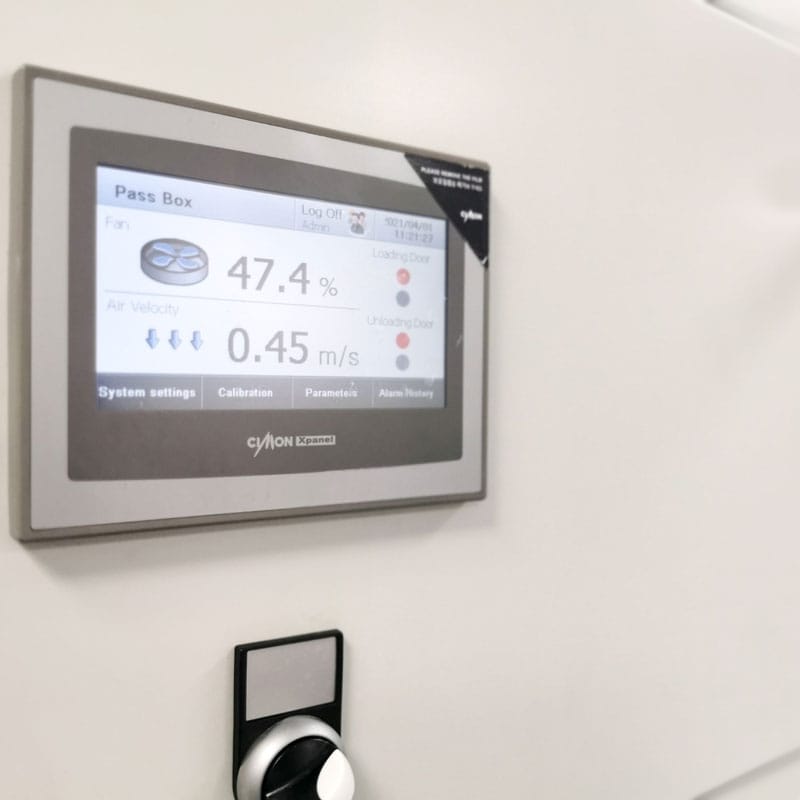
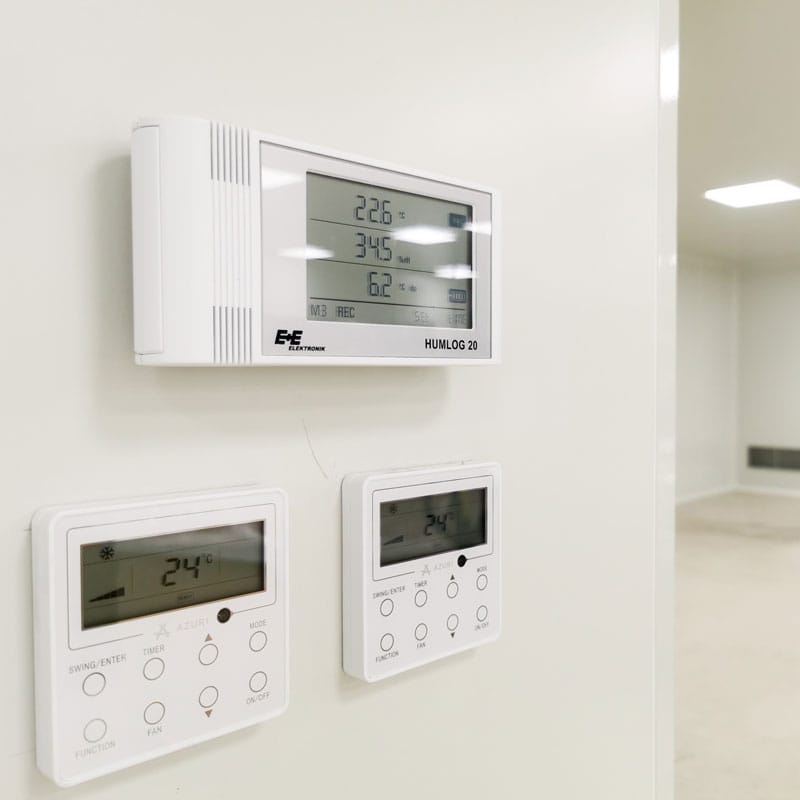
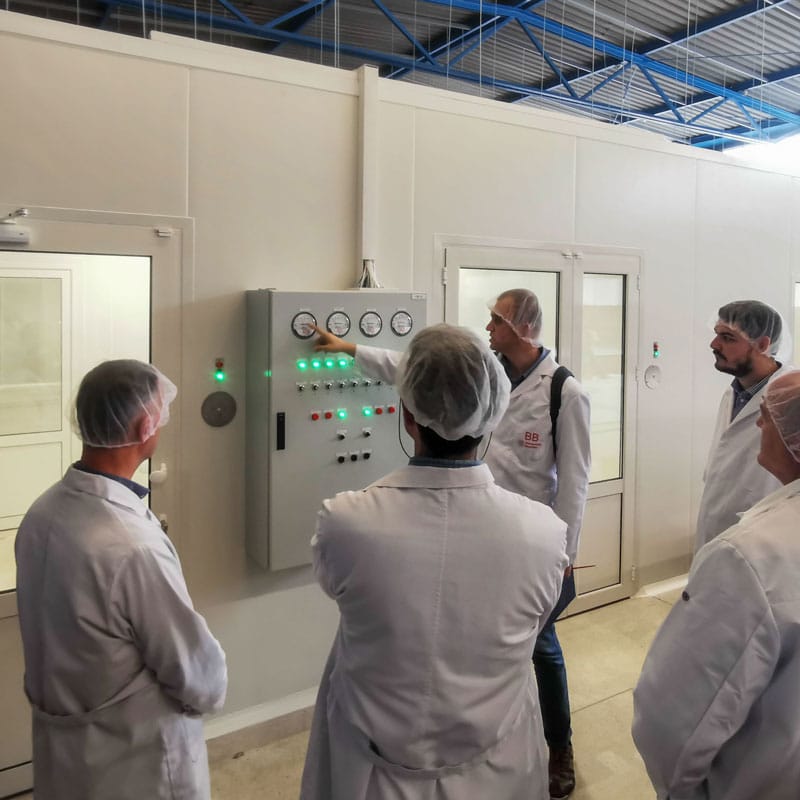
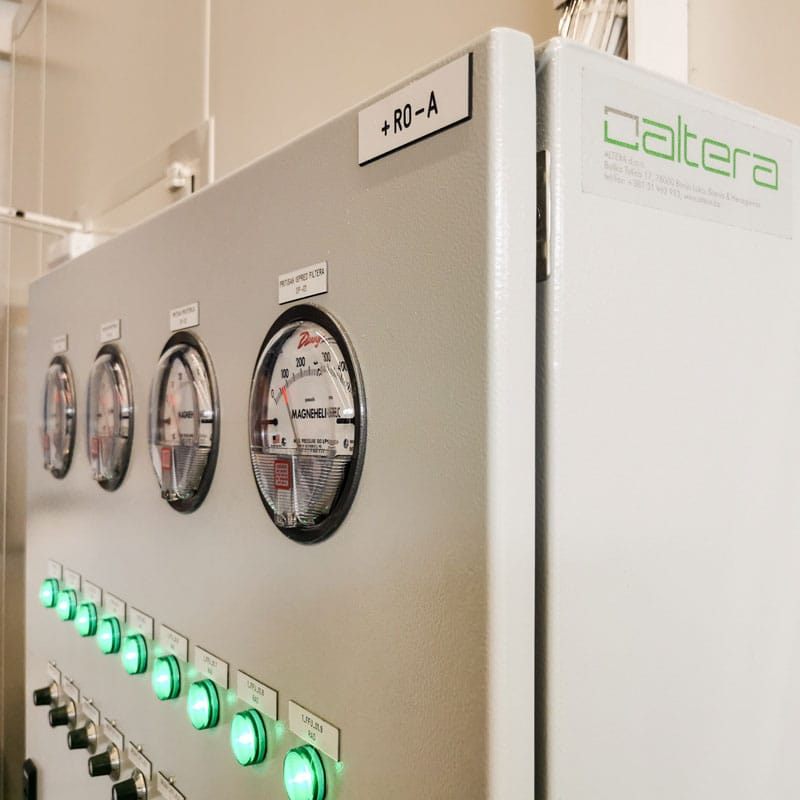
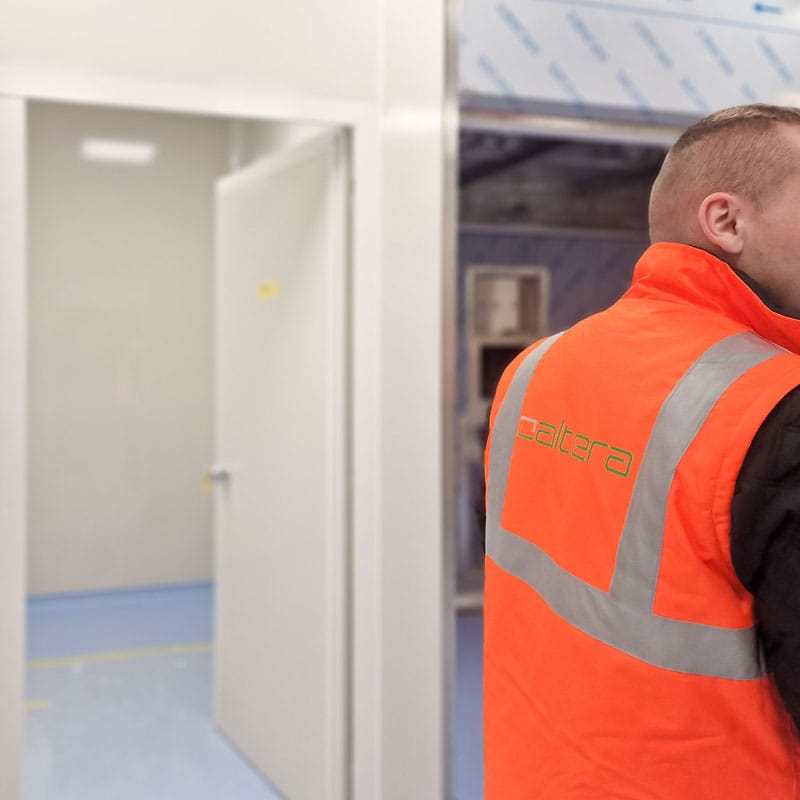
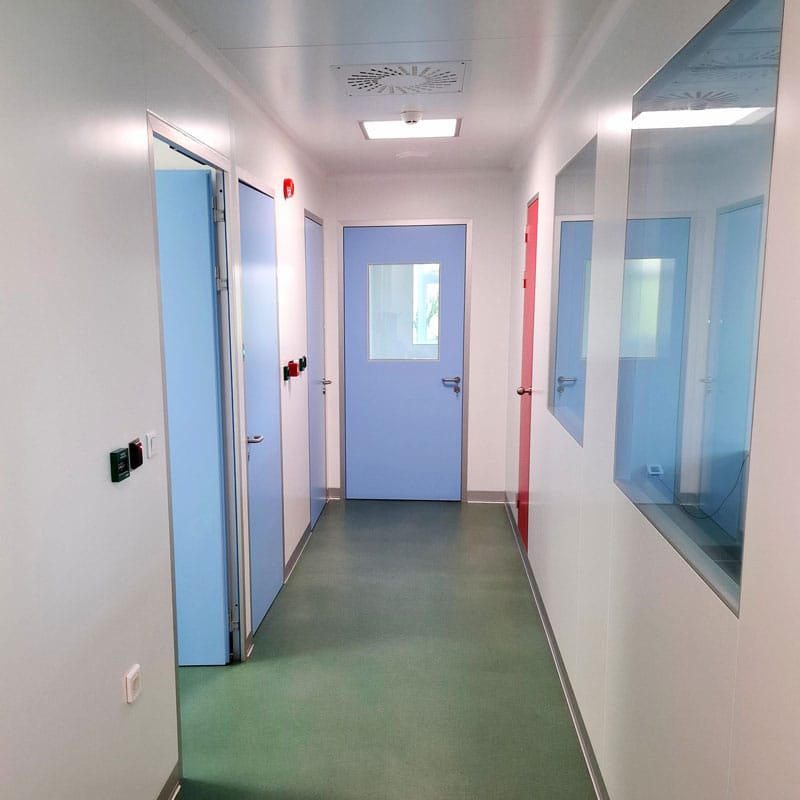
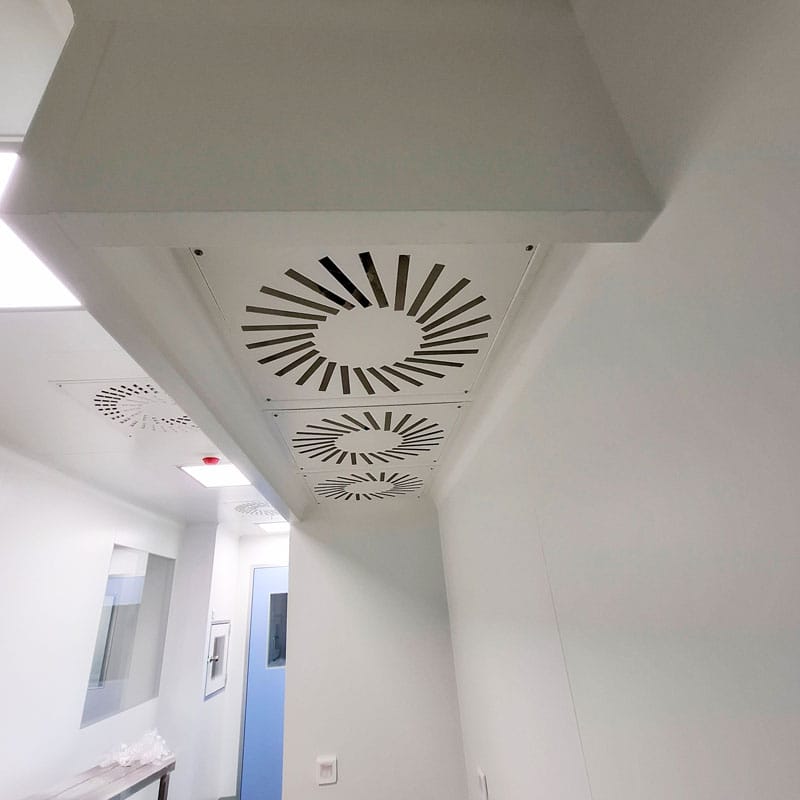
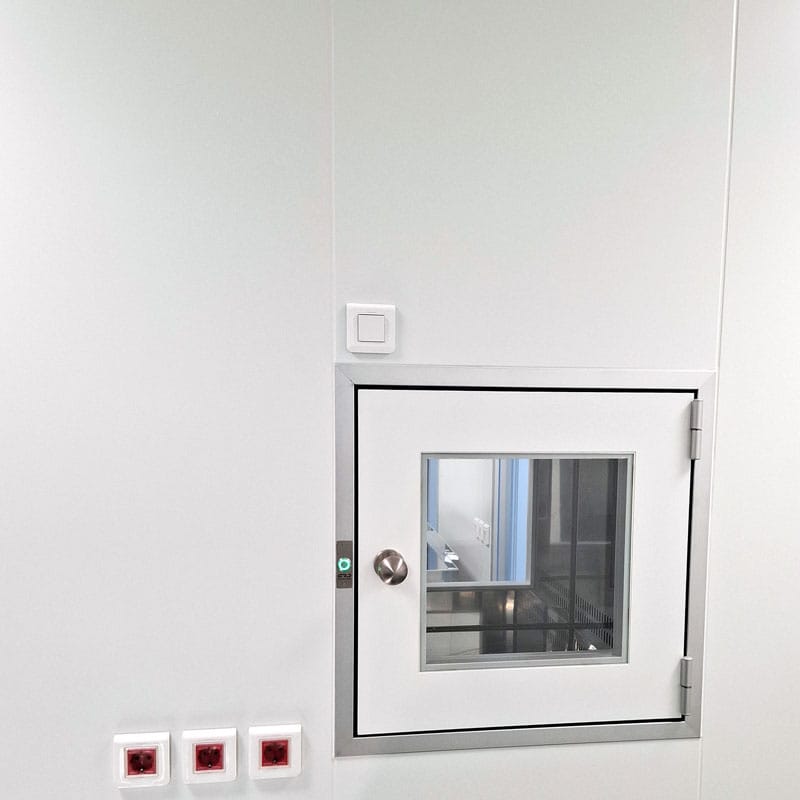
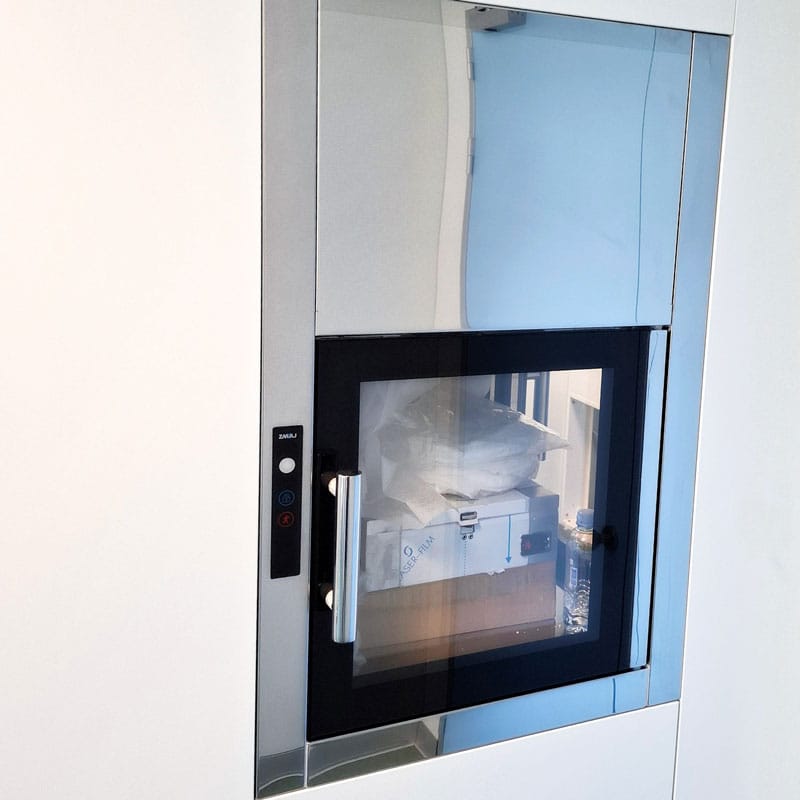
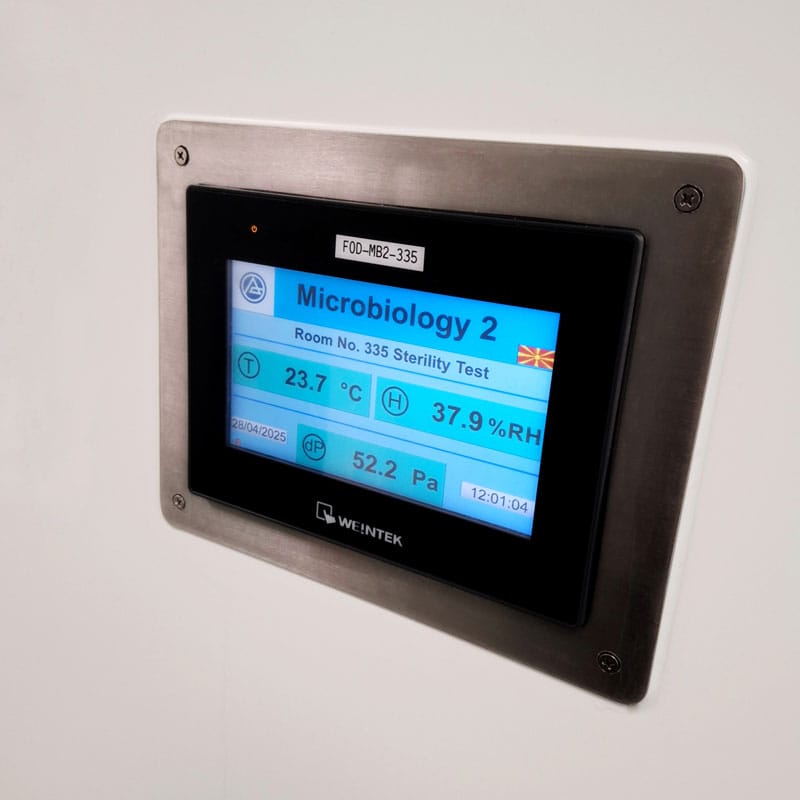
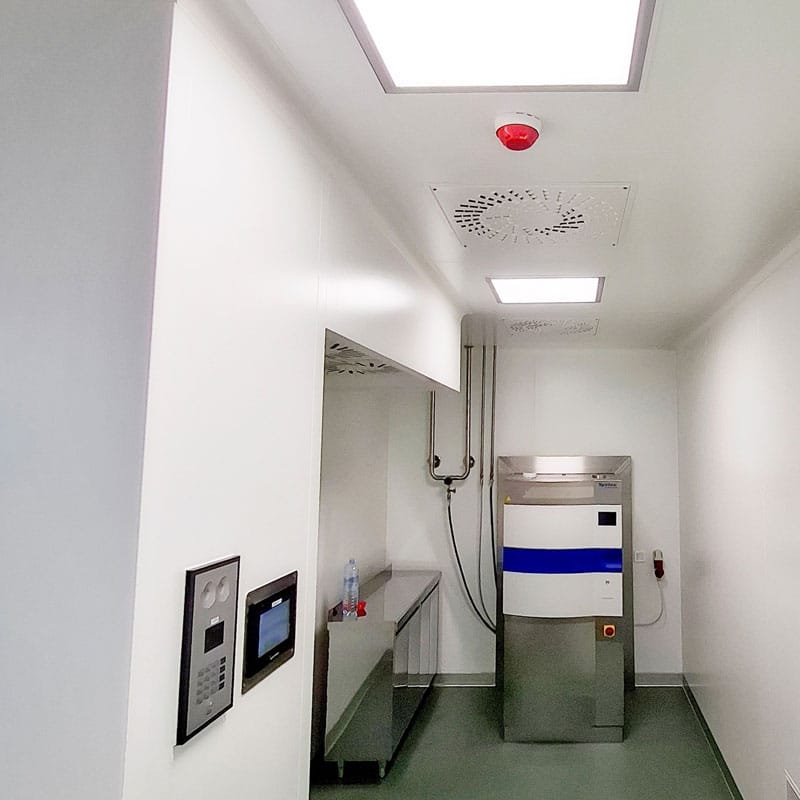


Cleanroom standards
Cleanrooms are controlled environments where the level of contamination is defined by the number of particles per cubic meter of a specific size. A typical urban environment contains approximately 35,000,000 particles per cubic meter of air sized 0.5 µm or larger, corresponding to ISO Class 9. In contrast, an ISO Class 1 cleanroom allows zero particles in this size range and up to 12 particles per cubic meter smaller than 0.3 µm.
In the pharmaceutical industry, cleanrooms play a crucial role in the production of ingredients and products that must be protected from microbiological or any other contamination. These rooms are typically equipped with HEPA and, where necessary, ULPA filters, as well as air dehumidifiers.
Cleanrooms are classified according to the number of contaminant particles they contain per cubic meter of volume.
ISO 14644-1 standard for cleanrooms
EU GMP classification
| Class | Maximum particles per cubic meter | FED STD 209E equivalent | |||||
| ≥ 0.1 µm | ≥ 0.2 µm | ≥ 0.3 µm | ≥ 0.5 µm | ≥ 1.0 µm | ≥ 5.0 µm | ||
| ISO 1 | 10 | 2.37 | 1.02 | 0.35 | 0.083 | 0.0029 | – |
| ISO 2 | 100 | 23.7 | 10.2 | 3.5 | 0.83 | 0.029 | – |
| ISO 3 | 1 000 | 237 | 102 | 35 | 8.3 | 0.29 | class 1 |
| ISO 4 | 10 000 | 2 370 | 1 020 | 352 | 83 | 2.9 | class 10 |
| ISO 5 | 100 000 | 23 700 | 10 200 | 3520 | 832 | 29 | class 100 |
| ISO 6 | 1.0 x 106 | 237 000 | 102 000 | 35 200 | 8 320 | 293 | class 1 000 |
| ISO 7 | 1.0 x 107 | 2.37 x 106 | 1 020 000 | 352 000 | 83 200 | 2 930 | class 10 000 |
| ISO 8 | 1.0 x 108 | 2.37 x 107 | 1.02 107 | 3 520 000 | 832 000 | 29 300 | class 100 000 |
| ISO 9 | 1.0 x 109 | 2.37 x 108 | 1.02 x 108 | 35 200 000 | 8 320 000 | 293 000 | room air |
EU GMP guidelines are more stringent than others, requiring cleanrooms to meet particle counts at operation (during manufacturing process) and at rest (when manufacturing process is not carried out, but room AHU is on):
| Class | Maximum particles per cubic meter | |||
| At rest | At rest | In Operation | In Operation | |
| 0.5 µm | 5 µm | 0.5 µm | 5 µm | |
| grade A | 3 520 | 20 | 3 520 | 20 |
| grade B | 3 520 | 29 | 35 200 | 2.93 |
| grade C | 352 000 | 2 930 | 3 500 000 | 29.30 |
| grade D | 3 520 000 | 29 300 | not defined | not defined |
What affects the cleanliness of a clean room?
- Materials
Clean rooms are built from materials that are easy to clean and do not retain dirt – most often clean room panels covered on both sides with metal sheets and filled with rock wool.
- Design
Keeping a clean room class depends on a carefully planned layout of zones (including gray zones), air handling and distribution systems, technical equipment, as well as all technical connectors that are aligned with the requirements of the specific process.
- Equipment and furniture
Equipment and furniture used in clean rooms must have as low as possible contribution to the air contamination and must be made of special materials that are easy to clean – most often stainless steel.
- HVAC system
A system with an adequate number of air changes and adequate air quality.
- Air pressure
Balanced overpressure and underpressure depending on the configuration of the production process, in order to avoid cross contamination.
- Personnel
The way personnel enter the clean room and special wardrobe that is worn inside the clean room.
- Cleaning procedures
An appropriate cleaning procedure that must be followed according to strictly defined rules.
- Disinfectants
Using special disinfectants intended for maintaining a clean room.
